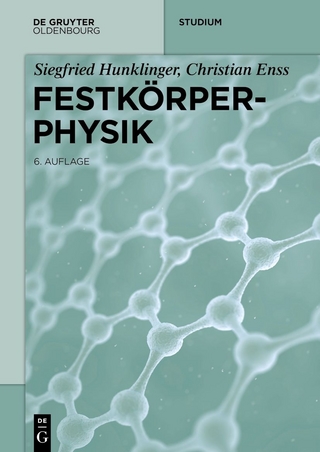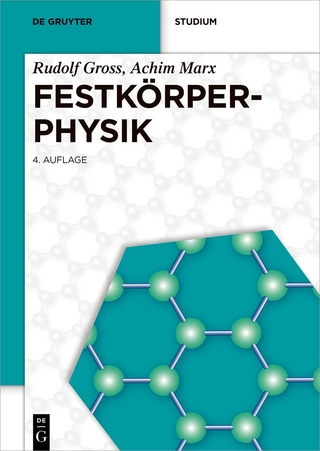
Theory of Simple Glasses
Cambridge University Press (Verlag)
978-1-107-19107-5 (ISBN)
This pedagogical and self-contained text describes the modern mean field theory of simple structural glasses. The book begins with a thorough explanation of infinite-dimensional models in statistical physics, before reviewing the key elements of the thermodynamic theory of liquids and the dynamical properties of liquids and glasses. The central feature of the mean field theory of disordered systems, the existence of a large multiplicity of metastable states, is then introduced. The replica method is then covered, before the final chapters describe important, advanced topics such as Gardner transitions, complexity, packing spheres in large dimensions, the jamming transition, and the rheology of glass. Presenting the theory in a clear and pedagogical style, this is an excellent resource for researchers and graduate students working in condensed matter physics and statistical mechanics.
Giorgio Parisi is a Professor of Physics at the Università degli Studi di Roma 'La Sapienza', Italy. His research is broadly focused on theoretical physics; from particle physics to glassy systems. He has been the recipient of numerous awards, including the Boltzmann Medal, the Enrico Fermi Prize, the Max Planck Medal, the Lars Onsager Prize and an ERC advanced grant. He is president of the Accademia dei Lincei and a member of the collaboration 'Cracking the glass problem', funded by the Simons Foundation. Pierfrancesco Urbani is a CNRS researcher. His research activity focuses on statistical physics of disordered and glassy systems. After a joint Ph.D. between Sapienza University of Rome, Italy and Université Paris-Sud, France, he joined the Institut de Physique Théorique of CEA, first as a post-doctoral researcher and then as a permanent researcher. Francesco Zamponi is a Centre national de la recherche scientifique (CNRS) Research Director and an Associated Professor at Ecole Normale Supérieure, Paris. His research is broadly focused on complex systems, ranging from glasses to agent-based models for macroeconomy. He has been awarded an ERC consolidator research grant and he is a member of the collaboration 'Cracking the glass problem' funded by the Simons Foundation.
Preface; 1. Infinite-dimensional models in statistical physics; 2. Atomic liquids in infinite dimensions: thermodynamics; 3. Atomic liquids in infinite dimensions: equilibrium dynamics; 4. Thermodynamics of glass states; 5. Replica symmetry breaking and hierarchical free energy landscapes; 6. The Gardner transition; 7. Counting glass states: the complexity; 8. Packing spheres in large dimensions; 9. The jamming transition; 10. Rheology of the glass; References; Index.
| Erscheinungsdatum | 25.02.2020 |
|---|---|
| Zusatzinfo | Worked examples or Exercises; 3 Tables, black and white; 6 Halftones, black and white; 42 Line drawings, black and white |
| Verlagsort | Cambridge |
| Sprache | englisch |
| Maße | 178 x 253 mm |
| Gewicht | 810 g |
| Themenwelt | Naturwissenschaften ► Physik / Astronomie ► Festkörperphysik |
| Technik ► Maschinenbau | |
| ISBN-10 | 1-107-19107-6 / 1107191076 |
| ISBN-13 | 978-1-107-19107-5 / 9781107191075 |
| Zustand | Neuware |
| Haben Sie eine Frage zum Produkt? |
aus dem Bereich


